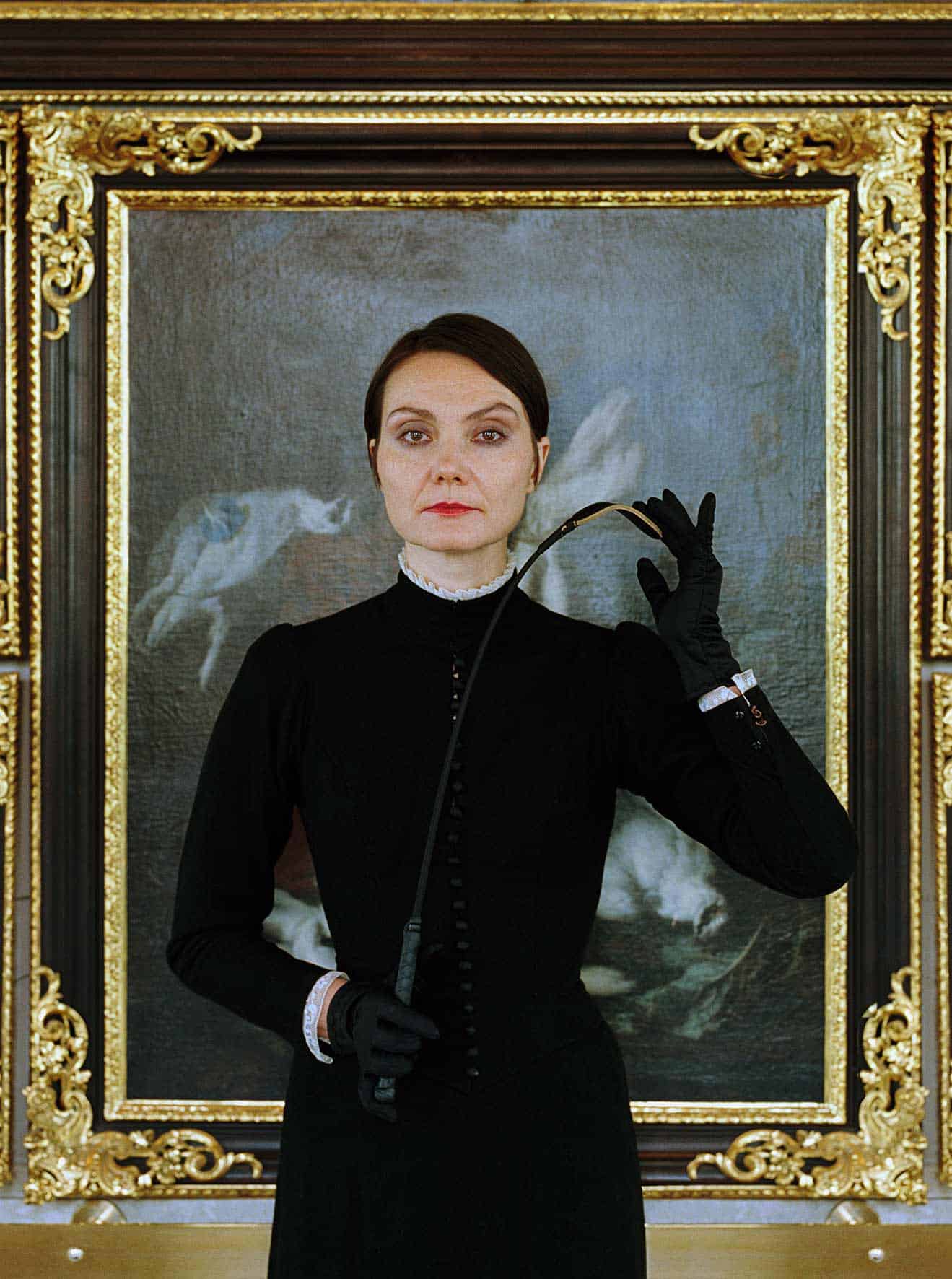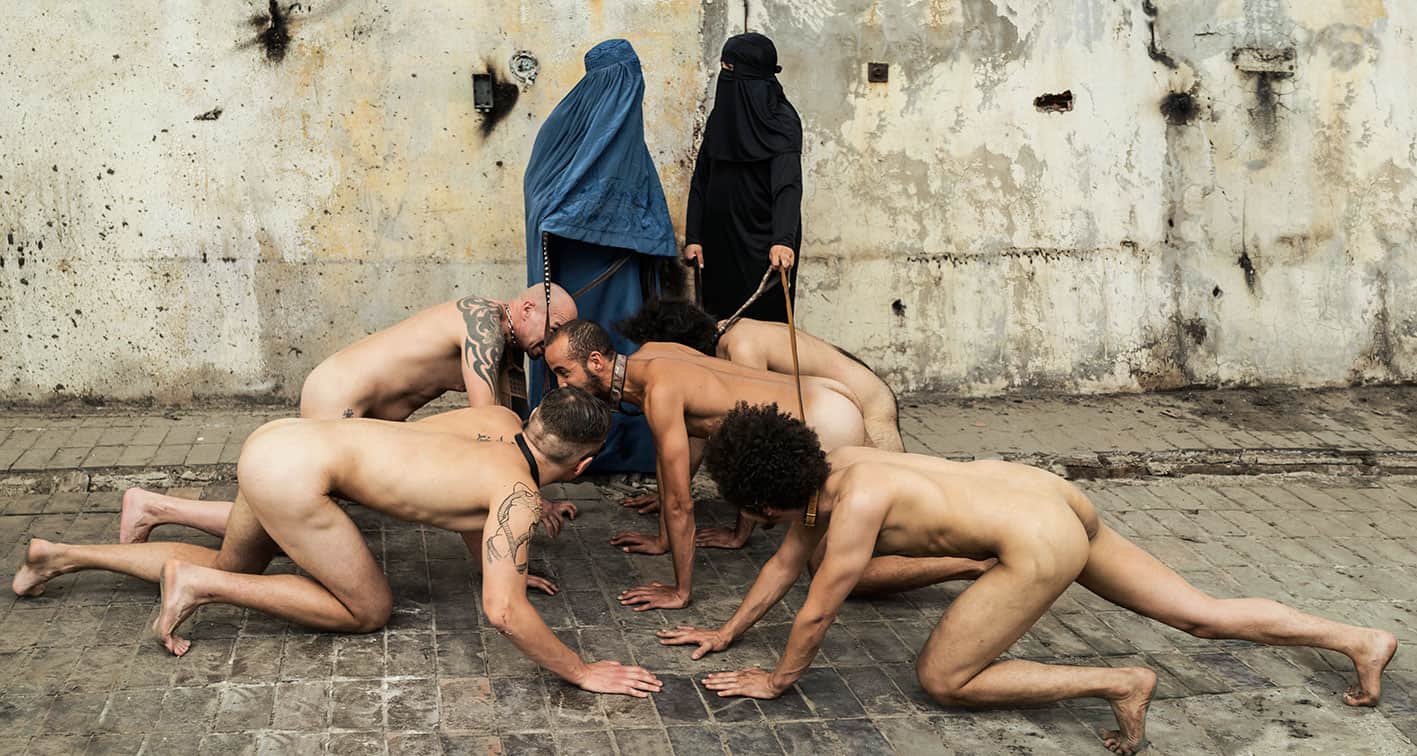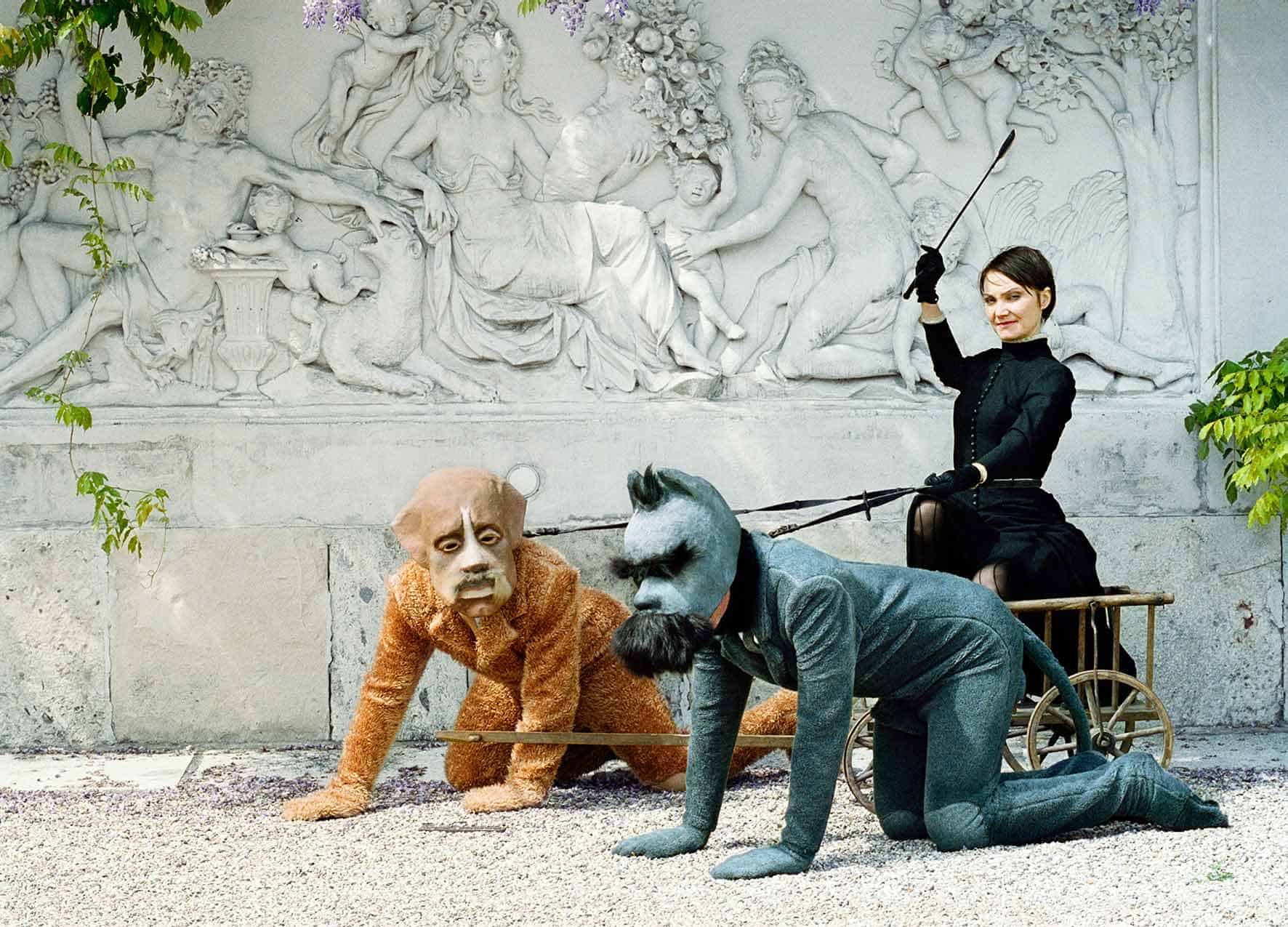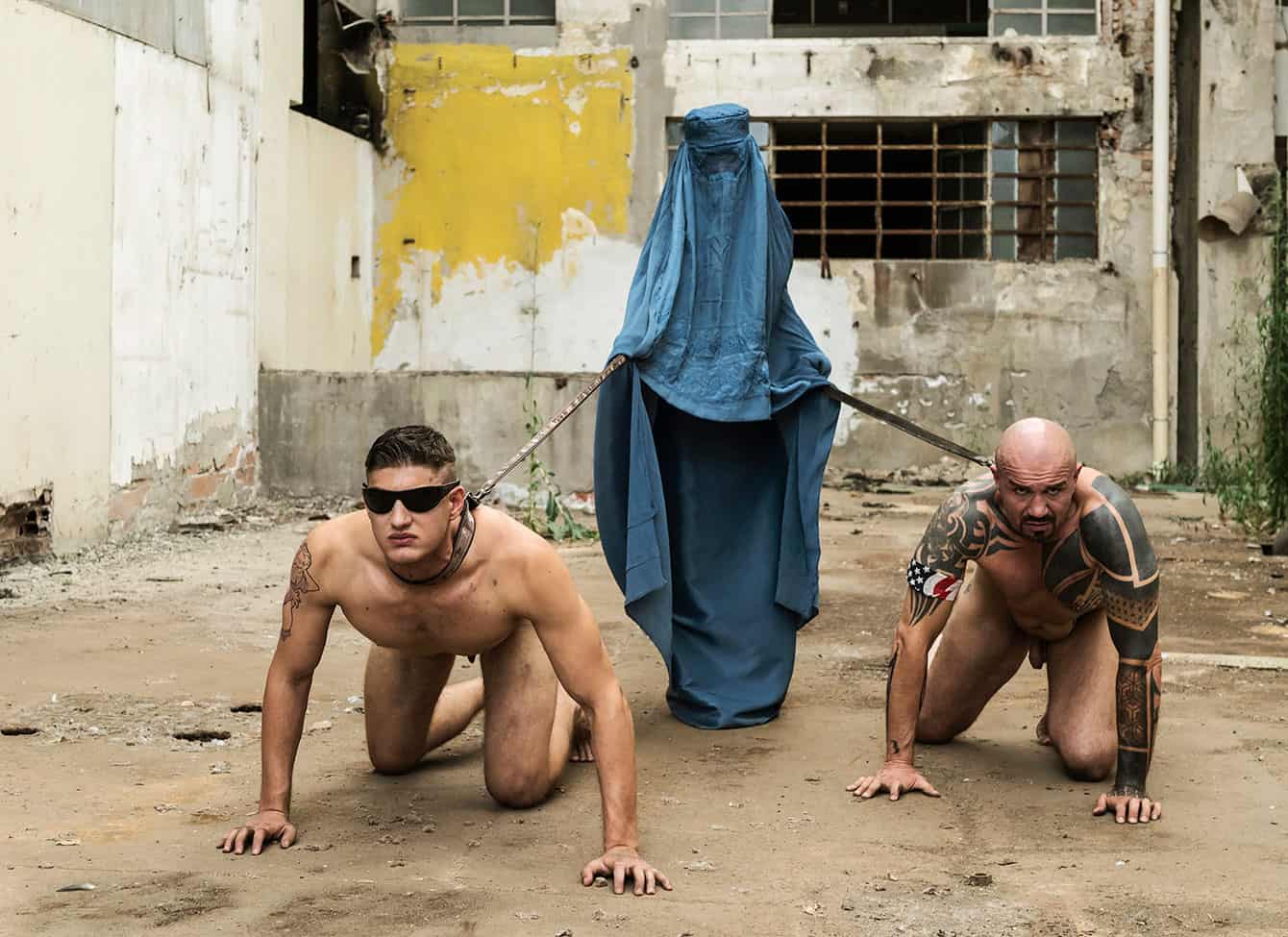In the ‘90s, Katarzyna Kozyra’s graduate piece ‘Pyramid of Animals’ and ‘Man’s Bathhouse’, which was given an honourable mention at the 48th Venice Biennale, paved the way to her recognition in the art world.

Katarzyna Kozyra, Lou Salome Palais Schwarzenberg: Lou Salome, Photo: Marianne Greber/ Bildrecht Wien 2005, courtesy ZAK | BRANICKA
Although the starting point of her professional path was at the Faculty of Sculpture of the Academy of Fine Arts in Warsaw, today in her vast and diverse portfolio traditional sculpture is nowhere to be found. The artworks’ media varies from installations, photography or performances (often based on dance, drag and operatic singing) to video and lately even feature-length documentary. The range of techniques as well as range of subjects is distinctive for her practice. Among them naked, disabled, ageing or imperfect human bodies bounded with gender and feminist issues stand out.
After familiarising myself with Kozyra’s oeuvre, it’s obvious that it doesn’t simply come down to her famous diploma piece. However, when thinking about her recent exhibition at the Żak|Branicka Gallery, Berlin, is difficult not to refer to the iconic work. ‘Pyramid of Animals’ (1993) was labelled one of the most controversial artworks of Polish contemporary art and became the symbol of the critical art movement. The use of taxidermied animals accompanied by footage featuring the killing of a horse, divided the art world and defenders of animal rights alike. In the making of Kozyra’s newest work, ‘A Dream of Linnaeus’ Daughter’ it is clear that no animals were harmed.

Katarzyna Kozyra, Homo Quadrupeds Friends, 2018, From the series Homo Quadrupeds, Photo, 166 x 308 cm © the artist, courtesy ZAK | BRANICKA
The video greeting us at the entrance to the Żak/Branicka Gallery is a documentation of the performance held in the Linnaeus Gardens (Uppsala, Sweden) on 19th May 2018, the artwork from which the title of the exhibition is derived. Kozyra conducted the Uppsala Chamber Orchestra choir but bestowed the choristers with animal voices. She deconstructed fairy tales and fantasies projected onto animals in which we make them speak our language – animalisation in lieu of centuries-long personalisation. The artist creates a peculiar Noah’s Ark, ending the whole performance with a flood from a garden hose, without sparing the audience.
When it comes to exploring animal traits as the main theme of the artwork, there are more links between this piece and ‘Pyramid of Animals’. The second was based on the brothers’ Grimm fairy tale ‘Town Musicians of Bremen’ and depicts the culminating point of the plotline – the horse, dog, cat and hen standing on each other’s backs, having scared off the robbers, taken over their hut and lived happily ever after – all of that thanks to their cooperation and powerful voices. However, their initial intention was to reach Bremen and become musicians. In some sense, “A Dream of Linnaeus’ Daughter” can be perceived as a reference or alternative ending to this story – Kozyra is giving animals an opportunity to sing by creating the choir of their voices and using its fierceness to perform the consciously chosen and obviously political “Ode to Joy”. Although it feels a bit utopian, she seems to be drawing parallels. Can we learn something from those animals in our gloomy European situation?

Katarzyna Kozyra, Lou Salome Palais Schwarzenberg: Carriage, Photo: Marianne Greber/ Bildrecht Wien 2005, courtesy ZAK | BRANICKA
One of the most powerful elements of this performance is Kozyra’s meaningful costume – she impersonates Elisabeth Christina von Linné, the daughter of Carl Linnaeus. In the artist’s interpretation, the imagined dream of the female botanist was to equalise all animal species in defiance of her father, who was known for their categorization1. Elisabeth von Linné managed to affect science but her history has a bitter end – she died aged 39 – according to her relatives, as a result of spousal abuse.
Lou Salomé is another one of Kozyra’s outstanding historical female figure incarnations, present in a series of works from 2005 named after her. Photographs depict animalised performers, wearing costumes or dogs resembling Nietzsche and Rilke with the titular intellectual as a dominatrix, keeping them on a leash and disciplining with a whip. Although Salomé was a prolific writer, her figure prevails in history primarily as the muse and lover of Nietzsche and other hyper-famous men. In the cases of both women, Kozyra is writing herstory with visual means, making those female figures present again, independent and agential.

Katarzyna Kozyra, Homo Quadrupeds Blue, 2018, From the series Homo Quadrupeds, Photo, 164 x 217 cm © the artist, courtesy ZAK | BRANICKA
These performances synthesise the interests visible in the artist’s early works with a strategy developed in a long-running cycle – ‘In Art Dreams Come True’ (2003 – 2008). This monumental work included several pieces revolving around Kozyra’s ironic struggles with becoming a hyper-feminine woman and operatic singer under the watchful eye of a drag queen and a vocal coach. The artist is creating surreal events, existing outside the boundaries of a generally accepted order of reality. Regardless of factual time or space, her art enables viewers to find themselves in the botanic garden together with Linnaeus’ daughter, in the Austrian Palace with Lou Salomé, admiring a peculiar concert on the museum’s façade (‘Fasadenconcerto’) or witnessing the castration of a drag queen impersonated by the artist (‘Il Castrato’).
We have to step further into gallery space for the third, final artwork – the photographic series ‘Homo Quadrupeds’ (2017) – to be revealed to us at large. Partly hidden, it may be considered as the most controversial in the exhibition. It consists of large photographs depicting Muslim women in burqas “on a walk” with naked men mimicking dogs led on leashes. The juxtaposition of fully covered women’s bodies with naked men under their control turns the bitter reality of women’s oppression around – in art, anything can happen. It can also be viewed as a symbol of women’s strength even in the most unfavourable circumstances and their ability to influence men wielding political power, while remaining invisible themselves.

Katarzyna Kozyra, Homo Quadrupeds Black, 2018, From the series Homo Quadrupeds, Photo, 160 x 217 cm © the artist, courtesy ZAK | BRANICKA
The exhibition is concise and coherent, with two visible themes – Kozyra’s feminist and ecological approaches, which are joined thorough reference to Donna Haraway manifestos2. Haraway stated already in 1985 that the boundaries between species are becoming increasingly blurred. Nowadays, new biological possibilities are fueling people’s imaginations. In a second, one can find numerous YouTube videos and sensationalist articles on bold genetic modifications (among them lots of fake news, obviously). Although we have never been so close and flexible in terms of biological boundaries, we remain far from one another when it comes to compassion, empathy, solidarity, and tolerance – among species, genders, nationalities or any other kind of otherness. Kozyra’s artworks consistently remind us of that.
Written by Natalia Dorocka

Katarzyna Kozyra, Lou Salome Palais Schwarzenberg: Rilke, Photo: Marianne Greber/ Bildrecht Wien 2005, courtesy ZAK | BRANICKA
‘A Dream of Linnaeus’ Daughter’
24/11/2018 – 16/02/2019
ŻAK | BRANICKA Gallery,
Lindenstraße 34-35, Berlin
1 ‘A Dream of Linnaeus’ Daughter’, Żak|Branicka Gallery official website. http://zak-branicka.com/files/file_122_en_d41d8cd98f00b204e9800998ecf8427e.pdf (accessed 13.01.2019)
2 ‘Cyborg manifesto’ (1985) and ‘The Companion Species Manifesto’ (2003)











